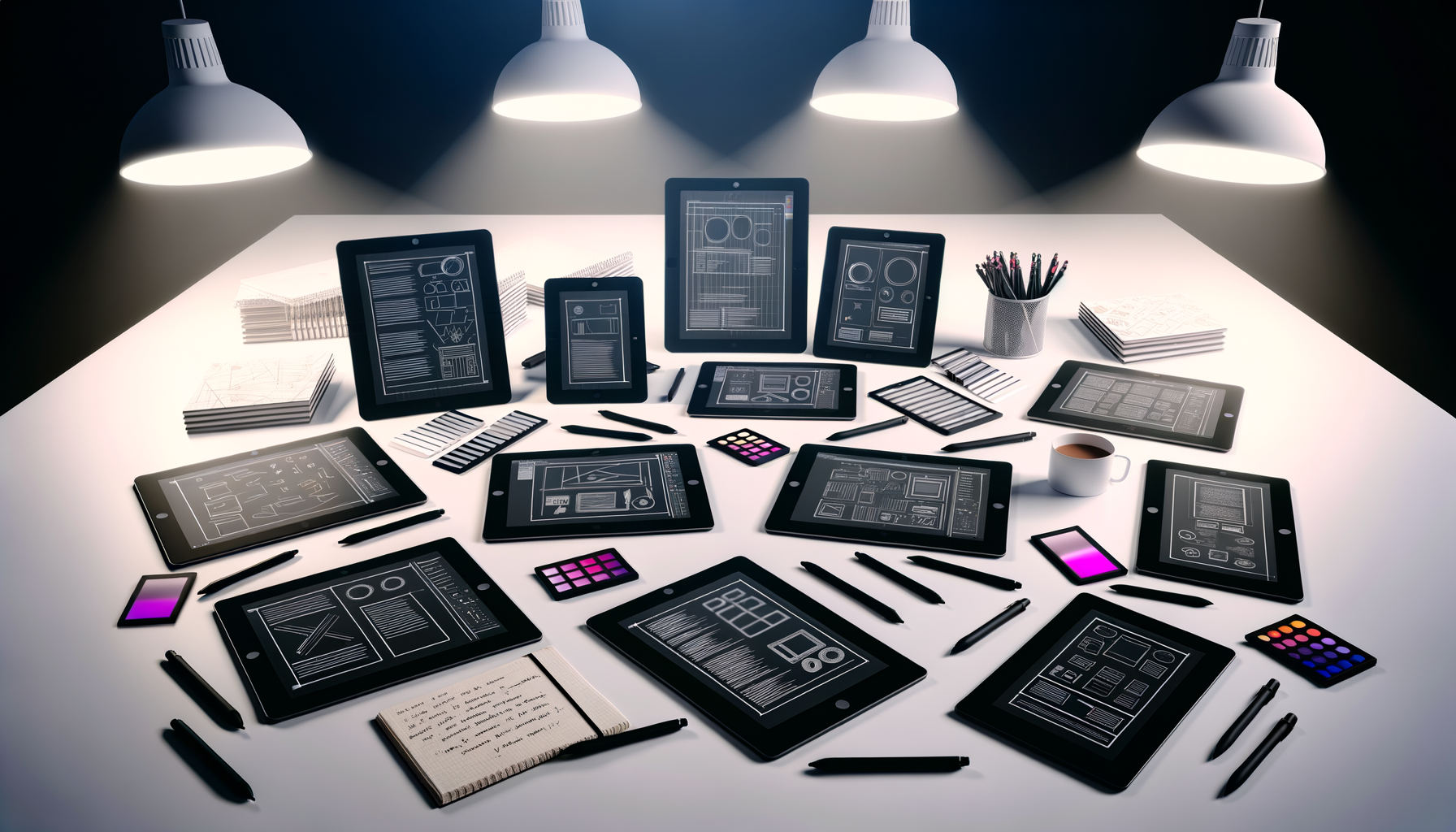
Top Drawing Tablets for UI/UX Developers in 2024: Boost Your Design Workflow
As a UI/UX developer, having the right tools can make all the difference in your design workflow. Did you know that 87% of professional designers consider a drawing tablet essential for their work? In this article, we’ll explore the top drawing tablets tailored specifically for UI/UX developers in 2024. Whether you’re a seasoned pro or just starting out, we’ve got you covered!
Key Features to Look for in Drawing Tablets for UI/UX Developers
When it comes to choosing the right drawing tablet for UI/UX development, there are several key features you’ll want to keep an eye out for. Let’s chat about some of the most important ones.
First up, pressure sensitivity and tilt recognition. These features are game-changers for creating natural-looking designs. Imagine being able to draw a line that gets thicker or thinner depending on how hard you press – just like with a real pen! And tilt recognition? It’s like having a digital pencil that responds to the angle you hold it at. Pretty cool, right?
Next, we’ve got screen resolution and color accuracy. As a UI/UX developer, you know how crucial it is to see your designs exactly as they’ll appear to users. A high-resolution screen with excellent color accuracy ensures that what you see is what you get.
Customizable shortcut keys and touch bars are another feature you’ll want to look for. These can be real time-savers, allowing you to access your most-used tools with just a tap or a click.
Lastly, make sure the tablet is compatible with your favorite design software. There’s nothing more frustrating than getting a new tablet only to find out it doesn’t play nice with the programs you use daily.
Top Drawing Tablets for UI/UX Developers in 2024
Now that we know what to look for, let’s talk about some of the best options out there for UI/UX developers in 2024.
The Wacom Cintiq Pro 24 is the cream of the crop. It’s a high-end option with exceptional performance across the board. If you’re serious about your UI/UX work and have the budget for it, this tablet is hard to beat.
For those who prefer a more mobile setup, the iPad Pro with Apple Pencil is a fantastic choice. It’s versatile enough to handle UI/UX work on the go, and the integration between the iPad and Apple Pencil is seamless.
If you’re looking for a more budget-friendly option that doesn’t skimp on features, check out the XP-Pen Artist 24 Pro. It offers impressive performance at a fraction of the cost of some higher-end models.
Last but not least, we have the Huion Kamvas Pro 24. This tablet boasts a large drawing area and excellent color accuracy, making it a great choice for UI/UX work that requires attention to detail.
Integrating Drawing Tablets into Your UI/UX Workflow
So you’ve got your new drawing tablet – now what? Let’s talk about how to make the most of it in your UI/UX workflow.
Setting up custom shortcuts is a great place to start. Take some time to configure your tablet’s buttons and touch bars to access your most-used tools quickly. This can significantly speed up your workflow.
Using layers and templates is another pro tip for rapid prototyping. Set up some basic UI templates and use layers to quickly iterate on different design ideas.
Don’t forget to leverage that pressure sensitivity we talked about earlier. It’s great for creating realistic UI elements like buttons or sliders that have a sense of depth or texture.
Tips for Maximizing Productivity with Your Drawing Tablet
Want to squeeze every ounce of productivity out of your new tablet? Here are a few tips to help you do just that.
First, take the time to calibrate your tablet properly. This ensures that your cursor aligns perfectly with your stylus, making your work more precise and less frustrating.
Experiment with different stylus nibs, too. Many tablets come with a variety of nibs that can create different textures or levels of resistance. Find the one that feels most natural to you.
Consider when to use a screen tablet versus a non-screen tablet. Screen tablets are great for detailed work where you need to see exactly where you’re drawing, while non-screen tablets can be better for quick sketches or when you need to keep an eye on reference material on your main screen.
Future Trends in Drawing Tablets for UI/UX Development
Looking ahead, there are some exciting trends on the horizon for drawing tablets in UI/UX development.
AI-assisted design features are starting to make their way into tablets and associated software. Imagine having an AI assistant that can help refine your designs or suggest improvements based on best practices.
Improved haptic feedback is another trend to watch. Future tablets may provide more realistic drawing experiences by simulating the feel of different drawing tools and surfaces.
Finally, keep an eye out for increased integration with VR and AR technologies. This could open up new possibilities for immersive prototyping, allowing you to design and test UIs in virtual 3D spaces. The future of UI/UX development is looking pretty exciting!
Conclusion
Investing in the right drawing tablet can significantly enhance your UI/UX development process. By considering the features we’ve discussed and exploring the top options available in 2024, you’ll be well-equipped to take your designs to the next level. Remember, the best tablet for you is the one that fits seamlessly into your workflow and helps bring your creative visions to life. So, why wait? Grab a drawing tablet and start creating amazing UI/UX designs today!